#How to Bring Your Product to Amazon
Explore tagged Tumblr posts
Text
How to Bring Your Product to Amazon
How to Bring Your Product to Amazon Source – www.aboutamazon.com Adding Amazon to the places companies sell products increases conversions and gets a brand in front of its target audience. Most retail businesses should at least consider whether the online shopping giant offers a good opportunity to reach new customers. How to Sell Products on Amazon In a survey of over 2,000 Amazon sellers,…

View On WordPress
0 notes
Text
bro im basically designing an oc for my final project for one of my classes
#num speaks#thats not the point of the assignment btw we each have to pick a communication problem and create a solution for it#<- thats vague as fuck i dont know how to explain it#but basically im talking about how ads convince people to buy useless shit#and my solution was a little pop up box that tells you whether you need a product or not#and if you dont need it it'll offer you an alternative#i sent the idea to my teacher and she asked a good question; why wouldn't people just click off and go on with their day#SO. i was thinking about making a little mascot for the pop up box#bc for the project we have to bring in our solution so im thinking about doing a comic strip showing how it works n stuff#so. my dumbass named the mascot PopUp. very original very creative </3#hes basically an extension on your device and whenever youre on a website or app like amazon he shows up#hes basically a shimeji. LMFAO. thats the quickest way to explain it. a shimeji who questions your decisions#obv thats not the final idea i still need to add a bunch to it but#yeah im basically making an oc atp arent i. LMFAOOOO#should mention that my teacher said that the solution didnt have to be rational but it had to be TECHNICALLY possible#...so technically my idea is possible..!
0 notes
Text
The one weird monopoly trick that gave us Walmart and Amazon and killed Main Street

I'm coming to BURNING MAN! On TUESDAY (Aug 27) at 1PM, I'm giving a talk called "DISENSHITTIFY OR DIE!" at PALENQUE NORTE (7&E). On WEDNESDAY (Aug 28) at NOON, I'm doing a "Talking Caterpillar" Q&A at LIMINAL LABS (830&C).

Walmart didn't just happen. The rise of Walmart – and Amazon, its online successor – was the result of a specific policy choice, the decision by the Reagan administration not to enforce a key antitrust law. Walmart may have been founded by Sam Walton, but its success (and the demise of the American Main Street) are down to Reaganomics.
The law that Reagan neutered? The Robinson-Patman Act, a very boring-sounding law that makes it illegal for powerful companies (like Walmart) to demand preferential pricing from their suppliers (farmers, packaged goods makers, meat producers, etc). The idea here is straightforward. A company like Walmart is a powerful buyer (a "monopsonist" – compare with "monopolist," a powerful seller). That means that they can demand deep discounts from suppliers. Smaller stores – the mom and pop store on your Main Street – don't have the clout to demand those discounts. Worse, because those buyers are weak, the sellers – packaged goods companies, agribusiness cartels, Big Meat – can actually charge them more to make up for the losses they're taking in selling below cost to Walmart.
Reagan ordered his antitrust cops to stop enforcing Robinson-Patman, which was a huge giveaway to big business. Of course, that's not how Reagan framed it: He called Robinson-Patman a declaration of "war on low prices," because it prevented big companies from using their buying power to squeeze huge discounts. Reagan's court sorcerers/economists asserted that if Walmart could get goods at lower prices, they would sell goods at lower prices.
Which was true…up to a point. Because preferential discounting (offering better discounts to bigger customers) creates a structural advantage over smaller businesses, it meant that big box stores would eventually eliminate virtually all of their smaller competitors. That's exactly what happened: downtowns withered, suburban big boxes grew. Spending that would have formerly stayed in the community was whisked away to corporate headquarters. These corporate HQs were inevitably located in "onshore-offshore" tax haven states, meaning they were barely taxed at the state level. That left plenty of money in these big companies' coffers to spend on funny accountants who'd help them avoid federal taxes, too. That's another structural advantage the big box stores had over the mom-and-pops: not only did they get their inventory at below-cost discounts, they didn't have to pay tax on the profits, either.
MBA programs actually teach this as a strategy to pursue: they usually refer to Amazon's "flywheel" where lower prices bring in more customers which allows them to demand even lower prices:
https://www.youtube.com/watch?v=BaSwWYemLek
You might have heard about rural and inner-city "food deserts," where all the independent grocery stores have shuttered, leaving behind nothing but dollar stores? These are the direct product of the decision not to enforce Robinson-Patman. Dollar stores target working class neighborhoods with functional, beloved local grocers. They open multiple dollar stores nearby (nearly all the dollar stores you see are owned by one of two conglomerates, no matter what the sign over the door says). They price goods below cost and pay for high levels of staffing, draining business off the community grocery store until it collapses. Then, all the dollar stores except one close and the remaining store fires most of its staff (working at a dollar store is incredibly dangerous, thanks to low staffing levels that make them easy targets for armed robbers). Then, they jack up prices, selling goods in "cheater" sizes that are smaller than the normal retail packaging, and which are only made available to large dollar store conglomerates:
https://pluralistic.net/2023/03/27/walmarts-jackals/#cheater-sizes
Writing in The American Prospect, Max M Miller and Bryce Tuttle1 – a current and a former staffer for FTC Commissioner Alvaro Bedoya – write about the long shadow cast by Reagan's decision to put Robinson-Patman in mothballs:
https://prospect.org/economy/2024-08-13-stopping-excessive-market-power-monopoly/
They tell the story of Robinson-Patman's origins in 1936, when A&P was using preferential discounts to destroy the independent grocery sector and endanger the American food system. A&P didn't just demand preferential discounts from its suppliers; it also charged them a fortune to be displayed on its shelves, an early version of Amazon's $38b/year payola system:
https://pluralistic.net/2022/11/28/enshittification/#relentless-payola
They point out that Robinson-Patman didn't really need to be enacted; America already had an antitrust law that banned this conduct: section 2 of the the Clayton Act, which was passed in 1914. But for decades, the US courts refused to interpret the Clayton Act according to its plain meaning, with judges tying themselves in knots to insist that the law couldn't possibly mean what it said. Robinson-Patman was one of a series of antitrust laws that Congress passed in a bid to explain in words so small even federal judges could understand them that the purpose of American antitrust law was to keep corporations weak:
https://pluralistic.net/2023/04/14/aiming-at-dollars/#not-men
Both the Clayton Act and Robinson-Patman reject the argument that it's OK to let monopolies form and come to dominate critical sectors of the American economy based on the theoretical possibility that this will lead to lower prices. They reject this idea first as a legal matter. We don't let giant corporations victimize small businesses and their suppliers just because that might help someone else.
Beyond this, there's the realpolitik of monopoly. Yes, companies could pass lower costs on to customers, but will they? Look at Amazon: the company takes $0.45-$0.51 out of every dollar that its sellers earn, and requires them to offer their lowest price on Amazon. No one has a 45-51% margin, so every seller jacks up their prices on Amazon, but you don't notice it, because Amazon forces them to jack up prices everywhere else:
https://pluralistic.net/2024/03/01/managerial-discretion/#junk-fees
The Robinson-Patman Act did important work, and its absence led to many of the horribles we're living through today. This week on his Peoples & Things podcast, Lee Vinsel talked with Benjamin Waterhouse about his new book, One Day I’ll Work for Myself: The Dream and Delusion That Conquered America:
https://athenaeum.vt.domains/peoplesandthings/2024/08/12/78-benjamin-c-waterhouse-on-one-day-ill-work-for-myself-the-dream-and-delusion-that-conquered-america/
Towards the end of the discussion, Vinsel and Waterhouse turn to Robinson-Patman, its author, Wright Patman, and the politics of small business in America. They point out – correctly – that Wright Patman was something of a creep, a "Dixiecrat" (southern Democrat) who was either an ideological segregationist or someone who didn't mind supporting segregation irrespective of his beliefs.
That's a valid critique of Wright Patman, but it's got little bearing on the substance and history of the law that bears his name, the Robinson-Patman Act. Vinsel and Waterhouse get into that as well, and while they made some good points that I wholeheartedly agreed with, I fiercely disagree with the conclusion they drew from these points.
Vinsel and Waterhouse point out (again, correctly) that small businesses have a long history of supporting reactionary causes and attacking workers' rights – associations of small businesses, small women-owned business, and small minority-owned businesses were all in on opposition to minimum wages and other key labor causes.
But while this is all true, that doesn't make Robinson-Patman a reactionary law, or bad for workers. The point of protecting small businesses from the predatory practices of large firms is to maintain an American economy where business can't trump workers or government. Large companies are literally ungovernable: they have gigantic war-chests they can spend lobbying governments and corrupting the political process, and concentrated sectors find it comparatively easy to come together to decide on a single lobbying position and then make it reality.
As Vinsel and Waterhouse discuss, US big business has traditionally hated small business. They recount a notorious and telling anaecdote about the editor of the Chamber of Commerce magazine asking his boss if he could include coverage of small businesses, given the many small business owners who belonged to the Chamber, only to be told, "Over my dead body." Why did – why does – big business hate small business so much? Because small businesses wreck the game. If they are included in hearings, notices of inquiry, or just given a vote on what the Chamber of Commerce will lobby for with their membership dollars, they will ask for things that break with the big business lobbying consensus.
That's why we should like small business. Not because small business owners are incapable of being petty tyrants, but because whatever else, they will be petty. They won't be able to hire million-dollar-a-month union-busting law-firms, they won't be able to bribe Congress to pass favorable laws, they can't capture their regulators with juicy offers of sweet jobs after their government service ends.
Vinsel and Waterhouse point out that many large firms emerged during the era in which Robinson-Patman was in force, but that misunderstands the purpose of Robinson-Patman: it wasn't designed to prevent any large businesses from emerging. There are some capital-intensive sectors (say, chip fabrication) where the minimum size for doing anything is pretty damned big.
As Miller and Tuttle write:
The goal of RPA was not to create a permanent Jeffersonian agrarian republic of exclusively small businesses. It was to preserve a diverse economy of big and small businesses. Congress recognized that the needs of communities and people—whether in their role as consumers, business owners, or workers—are varied and diverse. A handful of large chains would never be able to meet all those needs in every community, especially if they are granted pricing power.
The fight against monopoly is only secondarily a fight between small businesses and giant ones. It's foundationally a fight about whether corporations should have so much power that they are too big to fail, too big to jail, and too big to care.

Community voting for SXSW is live! If you wanna hear RIDA QADRI and me talk about how GIG WORKERS can DISENSHITTIFY their jobs with INTEROPERABILITY, VOTE FOR THIS ONE!

If you'd like an essay-formatted version of this post to read or share, here's a link to it on pluralistic.net, my surveillance-free, ad-free, tracker-free blog:
https://pluralistic.net/2024/08/14/the-price-is-wright/#enforcement-priorities
#pluralistic#Robinson-Patman Act#ftc#alvaro bedoya#monopoly#monopsony#main street#too big to jail#too big to care#impunity#regulatory capture#prices#the american prospect#Max M Miller#Bryce Tuttle#a and p#wright patman
2K notes
·
View notes
Text
Like im not even kidding here I just had to tap two share buttons (one was just an image pointing to the interactive meatball menu) to copy something. to copy a link.



Copy? I think you mean share.
#like..#this is everywhere man. is it just iphone#what if they try to take right click away from us#windows 12 revolutionizes the computer by taking away your right click#instead you use your voice to talk to your personal ai who can do all that troublesome computer tasks for you#no longer will you need to take control of this tool for yourself#get played like our little bitch! pay us for this! you want it!!!#i want stupider computers that dont try to do the human thinking for us#and like. do the computer thinking we need them to do. LMAO#i can only imagine how amazing a computer could really be in this decade#the fury i feel going from windows 98 to windows xp to this. every year. forever???#anyway i bring up windows here because this kind of idiotic corperate control#over how we navigate our devices#are deliberately designed to confuse us and delay each process long enough to sneak in and promote unwanted features#like.. (looks up)#‘find products on amazon’#windows would do this to us if we werent so committed to keyboard and mouse#angry old man going back to yelling at clouds now.
33 notes
·
View notes
Text
i am really so sorry to continue harping on about the watcher entertainment streaming service. but this kind of stuff (internet content as a business & marketing it as such) is truly my obsession, and i think i will implode if i don't talk about some of the takes i'm seeing.
i'd like to emphasize again i don't have strong feelings about watcher either way. i like ghost files, i watch mystery files sometimes, i watched worth it back in the buzzfeed days. i don't watch any of their shows religiously.
anyway, here's the main things i keep seeing crop up and my thoughts on each:
"watcher has 25 employees they have to pay, and employing people in this economy is good, so we should be banding together to pay them."
employing people is good if you currently have the capacity to pay them. i checked watcher's linkedin page, and many of their employees were hired within the last year or two. if they hired people they cannot pay with the business model they had before, something is seriously wrong with their internal bookkeeping/decision making. it means they either didn't know they couldn't pay these people long term, or they did know and were content with risking newly hired employees' livelihoods on a huge content pivot in the next year.
of note is that none of their employees' titles have anything to do with managing the finances of the company. they are the size of a small business but have no one aside from the figureheads of the company in charge of their finances.
this is the kind of company decision making that leads to downsizing and layoffs, which can be devastating. but you know what's worse than laying off a portion of your staff? laying off everyone because your business is going under.
"not everyone can afford the subscription, but those who can should pay it to support the watcher team."
no. $6/month for a couple hours of content (depending on what shows you actively watch and the natural fluctuation of their release schedule) is a fundamentally bad value. i can pay that much for a few movies on amazon. i can pay that much for dropout, if i want to support a smaller business instead.
and to be totally frank, even if people do sign up, i don't think they'd get enough to compete with the amount they get through patreon/sponsorships. and the fact that they didn't know how many of their subscribers would realistically sign up is a bad sign.
a pretty good conversion rate of free to paid subscribers of a service or content is 3% (usually accomplished through a free trial). given the very poor reception of the announcement, let's say about 1% of their 3 mil youtube subs pay for their service. that's 30k people paying for their new platform. that's $180k a month in their pocket.
(they currently only have 12k subs on patreon so we are being generous here.)
a sponsorship deal (based on my googling, i have less direct experience with this) is anywhere from $10-50 per 1000 views. they've gotten about 1 mil views on their last few videos. 3 mil subs is nothing to shake a stick at, but let's say they're on the lower end of the payscale at $25 per 1000 views. that's $25k a video, $100k a month if they release 1 video a week. their lowest patreon tier is 5 bucks, so even if all their subs are at that tier, that's another $60k, so $160k total. it's entirely likely they're bringing in much more than that when you factor in merch, adsence, etc.
did anyone on their team crunch numbers on how many people would need to sub to make the switch worth it? did anyone do market research on how many people they could convert to paid users? because if not, if they really didn't have a game plan for this, the subscription service was always doomed to fail.
"this was their only option to continue making the content they want to make, with the production value they want."
i watched their announcement video. a key point in that video is that they have done sponsored videos and that's what used to pay for their content, but they did not like the amount of creative control the sponsor had over the content.
look, i get that's no fun. we'd all love creatives to be able to make whatever they want. but when you are a small business with a team of employees relying on you, you have to think about making money, sometimes at the cost of creative liberties.
and they had so many other options to make money for the projects they want to make without jumping to a subscription platform.
they could have started actually promoting their patreon, and maybe done some restructuring of the tiers. why not a highly produced, special series just for patreon members? or a special high-budget episode of each series, while the main series is lower budget?
bite the bullet and continue taking sponsorship deals on some less-produced shows, while axing sponsorships from the ones the crew feels more passionate about.
schedule larger, blowout-production shows only when they can be afforded. this is what Notorious Amongus Guy streamer jerma does. he saves up for big productions like his baseball or dollhouse streams, so he can really get creative with them.
they had other options and they've tried very little, especially when you compare them to other content house business at similar scales. try guys and good mythical morning both put out significant content with significant staff, and have had to diversify their income streams with auxiliary products, shows with widely varied levels of production, etc. but it seems to be working for them. watcher has merch and that's about it, and seems to only want to increase the production quality of ALL their shows.
really, all this just boils down to a terrible business decision. it's hard to say if the watcher team is working with a consultant or anyone outside of their team, but they certainly don't have anyone internally who is experienced with running a business like this. to me, it seems very much like they got in a room together and did some extremely optimistic income ballparking with no research behind it.
and that might have been fine for three dudes running a channel alone, but if they're a business, they have to start making decisions like one.
#i encourage discussion on this in my notes btw!#you can even be mean to me if you disagree. i dont actually care#watcher
897 notes
·
View notes
Text

Bunny™
(Yandere Vox x Reader)
(A/N: After 10 months…I have finally posted something related to Hazbin Hotel 😭. Also I have an exam and other assignments that are due tonight but here I am. 😭)
Tw: Slight Gore, Mild Suggestiveness, Valentino, if you know Hazbin Hotel well you know what to expect 💀
-unedited-
You know how Apple has Siri and Amazon has Alexa?
-I’m thinking about Vox with a darling who’s face is on all his products.
-Your basically the mascot for Vox Tech™ and is featured in a lot of advertisements.
-Think about Barbie and the many versions of her there are. Your Vox’s Barbie.
-Vox is promoting a new treadmill that is bound to torture you if you don’t run? Expect to see your cute little ass in gym clothes running cutely on the machine. Yelping when the robot smacks your ass every time you slow down.
-Vox is promoting a new blender? Expect to see you in a cute apron as you giddily wave to the camera. Placing the head of some poor sinner in the blender as you press a button. Blending his head to mush. You even pose cutely as some blood splatters on your sweet innocent face.
-Vox is designing some killer high heels that work as self defense? Like they have buttons that releases pepper spray or sheathe knives or any kind of weapon. There you are swaying your hips as you kick your foot out, your heels sheathing out a gun that shoots the camera.
-You’re everywhere.
-Billboards, advertisements, your face is known by all in the Pride Ring.
-If Vox’s name is on it, then you’ll be on it as well.
-Like all of hell that buys a phone from Vox Tech will have your voice on it.
-Anyone can put a name on you. Some assholes name you bitch, “Hey, bitch what time is it?” “It’s 12:00 pm! Have an amazing afternoon!”
-But the common nickname that has stuck on you is Bunny.
-No one knows who came up with it, but Vox liked it so much that he decided to claim it.
-So officially your name is Bunny™. Anyone that takes that name will be sued by Vox Corp, thank you~!
-But you don’t display any bunny characteristics, neither do you have any demonic qualities.
-You’re human. Or at least you appear to be.
-But there is an eeriness to you.
-Like you know all those people in the Mandela Catalog that mimic being human? That’s you but there’s a deadness to your eyes that freaks people out if they look too closely.
-On posters or promos you’re this cute little mascot with your frilly pink skirt and your cute poses. Bows in your hair and pink glittery makeup adorning your face.
-But even though your holding up a peace sign and you have this big grin on your gloss covered lips, your big eyes hold no shine. Not even a glint they’re just so dead. But that’s easy to ignore with how you look.
-Your exotic in a way, a human that has no place in Hell. A relic of the past for many sinners. No sinner will ever see a human again. But they at least get to see you.
-With smooth skin and blunt teeth. No horns or glowing eyes or a tail swinging behind you. You are everything human.
-Many sinners are drawn to you either by your humanity or your pretty face. You’re famous admired by all and lusted after. They want to see you, touch you.
-And Vox? He hates it.
-You know how Angel Dust is Valentino’s obsession? His big star? Well that’s you and Vox, but he’s a bit too much.
-In areas where Angel Dust can leave Valentino’s studio, your prohibited from leaving Vee territory. Ever.
-You’re already a mystery throughout the Pride Ring. They don’t know if your an actual living breathing human or sinner. They don’t even know if you’re real or just some A.I. that Vox created.
-Everyone knows you, but no one’s seen you.
-And Vox will keep it that way.
-At first when Vox had stumbled upon you. A freshly fallen sinner, he had taken advantage of your naivety and tricked you into signing your soul to him.
-He used your image as a joke. He knew a human looking sinner would bring in mass attention.
-And he wasn’t wrong. You did wonders for advertising.
-However, the more he spent time with you, the more obsessed he became. Everything about you was a breathe of fresh air.
-It was a break of the toxicity of the other Vees, with Velvette’s cruel personality and Valentino’s abusive tendencies, you were kind.
-There’s this golden retriever energy to you, wide soulless eyes that blink up at him. Even though your eyes give him the creeps it’s direct contrast against your bubbly persona. Always smiling never frowning. An energetic little thing.
-You always looked happy.
-Even though he owns your soul, anyone would think he never tricked you with how you treat him like an old pal. You show no hostility to him when you smile brightly at him. Showing kindness and obediently following his orders.
-He found it amusing.
-“Bunny, hop.”
-“Okay!”
-“Bunny, sit.”
-“Mhm!”
-“Bunny, jump down to the fourteenth floor.”
-…
-“BuNnY, NO-!”
-You were an interesting sinner.
-Before he knew it he was spending time with you every waking minute. You’d follow him to important meetings in Vox Tech and he’d be directly involved in any of your appearances to the general public.
-And the protectiveness possessiveness he held for you.
-“WHO THE FUCK PUT HER IN THAT DRESS?! SHE’S BARELY WEARING ANYTHING! THIS IS A COMERCIAL FOR A FUCKING REFRIGERATOR FOR FUCKS SAKE!”
-“Valentino said you wanted this, sir.”
-“ugh, of course he would- Sweety! Come over here! We’re gonna give you a new dress change, okay?” He coos to you.
-“Okay sir!” You say with a big smile, pulling down the extremely tight short dress down your butt. Placing an arm around your chest to make sure none of your breasts slip out.
-He grew attached to you. To an extreme level.
-He’s always has your hand in the crook of his arm. Walking with you while giving out orders to his henchmen.
-While working on paperwork, he has you sitting on his lap while you furiously play on your Nintendo DS (strangely enough you brought it with you from the human realm). Zoned in on a game about dressing and impressing.
-And he even got you a little cage to sleep in his room. Though in later months you’d be sleeping in bed with him.
-“Goodnight Bunny.”
-“Goodnight, sir!” You say giddily in your cage.
-Yeah, your an odd sinner. With your human look and your inability to be anything but happy. There was something wrong with you.
-And something even more wrong with him with how he keeps you in a cage when he feels like too many sinners are looking at you. He’d later understand that his possessiveness comes from his blooming feelings for you.
-He often wonders how you managed to get into Hell. There’s no hostile bone in your body. But he often feels immensely uncomfortable when you stare at him for too long. Those big soulless eyes, a mystery he will never get to the bottom of.
-Other than that, he loves being around you.
-But by the time he knew how much you meant to him and how he wanted to keep you for himself.
-Bunny™ was already so intertwined with Vox Tech that he knew removing your image would damage the company. Now he didn’t want that.
-So he kept you as Vox Tech’s main mascot, obsessively managing you as his biggest star.
-If he can’t have you all to himself than he will at least make you perfect. Make everyone else jealous that they can’t have you.
-It especially works with his fellow Vees to his misfortune.
-He has to fight Velvette whenever she tries to take you away for modeling gigs. Claiming that your a better model than the other useless ones she has.
-“Everyone else is not meeting my standards! I need Bunny! Don’t be a selfish prick, you flat faced asshole!” She screeches stomping her feet.
-“Well that’s not our problem isn’t it, Bunny?”
-“Whatever you want Mr. Vox!”
-Don’t even get him started on the weekly back and forths with Valentino who is hellbent on starting your pornstar career. Which never fails to trigger him into a rage.
-He’ll allow Velvette to use you for modeling her newest outfits (knowing that your face will bring in clientele) but he draws a hard line in porn filming. Which pisses off Valentino to hell and back.
-It’s a topic that has put more of a strain on his and Valentino’s relationship. What with the giant moth man throwing a tantrum and Vox fiercely yelling back at him that. Any meeting between the two has high tension every since you came along.
-Meanwhile you and Angel Dust would be drinking slushies in your dressing room. Slushies bought from the Vox Tech cafeteria, of course! You can’t leave remember!
-As the biggest stars of your respective soul owners, you and Angel Dust quickly became friends.
-He finds your human face cute and you think his white fuzzy face is adorable.
-Whenever the two of you have breaks and your respective bosses are busy, you both hang out. He’ll give you the latest gossip around Hell while doing his makeup and you’ll pretend to act scandalized even though he knows that you love the drama he tells you about. He is your only connection to the world outside of Vee territory. Without him you wouldn’t know anything going on in the Pride Ring.
-He thinks your a strange one that’s for sure. While anyone else would be sad about losing ownership of their souls, you seem oddly…cheery.
-Especially when he knows how you can’t leave the Vees territory and Vox is constantly breathing down your neck.
-He shudders at how closely the television demon has you monitored he wouldn’t be surprised if he’s constantly watching you. (He is).
-He’d love to take you out on a spin with Cherry Bomb. He knows you two would hit it off. He even entertains the idea of you going back with him to the Hazbin Hotel. Away from this place, away from Vox.
-He knows they’d like you. Especially Charlie.
-His mismatched eyes soften as you show him your Nintendo DS, excitedly showing him games that you play.
-You a friendly face in a room full of predators. He remembers all the times you’d cheer him up after a horrible day at the job. Bringing him takeout to his dressing room and giving him hugs. You would soothe his cryings and take care of any damage that Valentino bestowed upon him.
-The confident spider doesn’t make a mention of how you see “a weaker side” of him. Embarrassed of being seen in a crying heap and looking vulnerable. But you know he’s grateful when you never make a mention of it. Distracting him from the sad reality that is his life.
-He knows you get punished by Vox when you do sneak away but you don’t seem to mind.
-You’re a light in the dark cutthroat environment that is the Vee territory.
-But he wonders if you have a light in this dark place?
-When both of your bosses come back, you have to say your goodbyes. You give him one last hug before skipping to Vox. The demon that owns your entire existence.
-He’s dismissed by Valentino (with threats to come back of course) while Vox slides a possessive arm around your waist. His hold tight and unyielding. Angel Dust knows how much Vox can’t stand being away from you.
-You walk away with Vox, waving back at him. He sadly waves back.
-He knows that answer is a no when he sees your dull eyes. Big eyes with no light. No soul.
-Soulless soulless eyes.

#tw.yandere#yandere x reader#reader insert#hazbin hotel#yandere#yandere x you#hazbin hotel x reader#vox x reader#hazbin hotel x you#hazbin hotel vox#vox the tv demon#hazbin vox#vox#angel dust#hazbin hotel velvette#vox x you#vox x y/n#valentino#hazbin valentino#overlord velvette#hazbin angel dust
194 notes
·
View notes
Text

Writer Spotlight: Jamie Beck
Jamie Beck is a photographer residing in Provence, France. Her Tumblr blog, From Me To You, became immensely successful shortly after launching in 2009. Soon after, Jamie, along with her partner Kevin Burg, pioneered the use of Cinemagraphs in creative storytelling for brands. Since then, she has produced marketing and advertising campaigns for companies like Google, Samsung, Netflix, Disney, Microsoft, Nike, Volvo, and MTV, and was included in Adweek Magazine’s “Creative 100” among the industry’s top Visual Artists. In 2022, she released her first book, An American in Provence, which became a NYT Bestseller and Amazon #1 book in multiple categories, and featured in publications such as Vogue, goop, Who What Wear, and Forbes. Flowers of Provence is Jamie’s second book.
Can you tell us about how The Flowers of Provence came to be?
I refer to Provence often as ‘The Garden of Eden’ for her harmonious seasons that bring an ever-changing floral bounty through the landscape. My greatest joy in life is telling her story of flowers through photography so that we may all enjoy them, their beauty, their symbolism, and their contribution to the harmony of this land just a bit longer.

(Photograph: Jamie Beck)
How do your photography and writing work together? Do you write as part of your practice?
I constantly write small notations, which usually occur when I am alone in nature with the intention of creating a photograph or in my studio working alone on a still life. I write as I think in my head, so I have made it a very strict practice that when a thought or idea comes up, I stop and quickly write the text in the notes app on my phone or in a pocket journal I keep with me most of the time. If I don’t stop and write it down at that moment, I find it is gone forever. It is also the same practice for shooting flowers, especially in a place as seasonal as Provence. If I see something, I must capture it right away because it could be gone tomorrow.

(Photograph: Jamie Beck)
You got your start in commercial photography. What’s something you learned in those fields that has served you well in your current creative direction?
I think my understanding of bridging art and commerce came from my commercial photography background. I can make beautiful photographs of flowers all day long, but how to make a living off your art is a completely different skill that I am fortunate enough to have learned by working with so many different creative brands and products in the past.

(Photograph: Jamie Beck)
Do you remember your first photograph?
Absolutely! I was 13 years old. My mother gave me her old Pentax 35mm film camera to play with. When I looked through the viewfinder, it was as if the imaginary world in my head could finally come to life! I gave my best friend a makeover, put her in an evening gown in the backyard of my parents’ house in Texas, and made my first photograph, which I thought was so glamorous! So Vogue!
You situate your photographic work with an introduction that charts the seasons in Provence through flowers. Are there any authors from the fields of nature writing and writing place that inspire you?
I absolutely adore Monty Don! His writing, his shoes, and his ease with nature and flowers—that’s a world in which I want to live. I also love Floret Flowers, especially on social media, as a way to learn the science behind flowers and how to grow them.
How did you decide on the order of the images within The Flowers of Provence?
Something I didn’t anticipate with a book deal is that I would actually be the one doing the layouts! I assumed I would hand over a folder of images, and an art director would decide the order. At first, it was overwhelming to sort through it all because the work is so personal, and I’m so visual. But in the end, it had to be me. It had to be my story and flow to be truly authentic. I tried to move through the seasons and colors of the landscape in a harmonious way that felt a bit magical, just as discovering Provence has felt to me.

(Photograph: Jamie Beck)
How do you practice self-care when juggling work and life commitments alongside the creative process?
The creative process is typically a result that comes out of taking time for self-care. I get some of my best ideas for photographic projects or writing when I am in a bath or shower or go for a long (and restorative) walk in nature. Doing things for myself, such as how I dress or do my hair and makeup, is another form of creative expression that is satisfying.
What’s a place or motif you’d like to photograph that you haven’t had a chance to yet?
I am really interested in discovering more formal gardens in France. I like the idea of garden portraiture, trying to really capture the essence and spirit of places where man and nature intertwine.
Which artists do you return to for inspiration?
I’m absolutely obsessed with Édouard Manet—his color pallet and subject matter.
What are three things you can’t live without as an artist?
My camera, the French light, and flowers, of course.
What’s your favorite flower to photograph, and why?
I love roses. They remind me of my grandmother, who always grew roses and was my first teacher of nature. The perfume of roses and the vast variety of colors, names, and styles all make me totally crazy. I just love them. They simply bring me joy the same way seeing a rainbow in the sky does.

(Photograph: Jamie Beck)
#writer spotlight#jamie beck#the flowers of provence#art#photography#flowers#cottagecore#aesthetics#naturecore#flowercore#still life#nature aesthetic#artist#artists on tumblr#fine art photography#long post#travel#France#Provence#original photographers#photographers on tumblr
1K notes
·
View notes
Note
I was just talking about this "mass handmade cookie cutter product" phenomenon, I was just at a con with four discreet 3d printer booths all of whom had the exact same articulated dragon with roses on it's back? and I literally own one of these at a small scale it's adorable i like the model quite a lot, but like. it's a $4 STL file online, the filaments are $20 each on amazon, once you buy the printer you can just print them in any size forever and charge whatever people will buy because they don't realize the seller has don't like. none of the design or labor involved in producing this item, despite the fact that they did factually make it themselves on a small enough scale that it's not out of place at a handmade maker con. it's odd.
IT MAKES ME FEEL LIKE I AM INSANE. IT MAKES ME FEEL OUT OF TOUCH WITH CONSENSUS REALITY!!!! like it's not the same as dropshipped items bc i think those should just flatout not be allowed without VERY clear signposting - like if you are selling mass produced notions for other people's creative products you should be legally required to state who your supplier is so ppl can look up how much you're upmarking shit, bc like. there IS a market for "the factory sells those buttons in batches of 100 and i only need 5, so i'll pay a little more for a middleman to have purchased the batch of 100 and handle all the inventory" like that is a service that makes sense. to have exist. but ohhhhh my fucking god.
but what you're describing is really true, i think there's a mix between like... i know small artists who sell stuff at markets and cons and stuff pay a table fee, so they want to make back what they spent on that, and so it makes sense to want to be sure that some of what you're making is going to sell, and maybe it even makes sense to do what you describe - buy an STL file, print off some proven winners.
but from the buyers' perspective, it means that half the art markets i go to are full of enamel pins that say CAT MOM and stickers about liking avocados and pride flag keychains, bc that's what sells, and anything that's original sits unsold - or it's more expensive bc it wasn't mass-produced and had higher labor costs, so it takes longer to move... so ppl stop stocking or bringing it... and it's like if all of this is the same why am i even here. T_T
#i thought we were supposed to be creative and follow the beat of our own drum... are we all just copying now?#read subcultures the meaning of style by hebdige (1979)#also it's the thing of why are all cars grey now. if it doesn't appeal to EVERYONE it's not worth doing. and it's like. please...
66 notes
·
View notes
Text
Campaigning for Lockwood & Co:
Prepare the kit bags and oil the iron chains Lock Nation. We aren’t done with this case yet.
I thought I’d compile a list of methods to voice our displeasure with Netflix’s recent decision for those of us who want to engage in saving the show.
The only string of hope I am holding onto right now is that Netflix was not the production company for the show, and as such Complete Fiction may hold more weight in its future than the former. Whilst Netflix doesn’t have a history of passing over cancelled shows to other platforms, that doesn’t mean it has never happened at all. “Uncoupled” recently got renewed by Showtime after being binned by Netflix. It’s not outside possibility.
We need to use streamlined hashtags to accompany posts on Netflix’s socials, on fan edits, and fan art; #bringbacklockwoodandco and #savelockwoodandco seem like good options to start with.
You can seek out the feedback options on Netflix’s online homepage to express your dissatisfaction.
Commenting on all of Netflix’s socials. And I mean all. For instance on Instagram alone we have Netflix US, Netflix UK, Netflix Geeked, Netflix ANZ, Netflix Brazil, Netflix Italia, Netflix Deutschland, Netflix Espana, Netflix France, Netflix KR, Netflix Queue and many more. As always I implore people to be passionate but POLITE AND RESPECTFUL. I know we are all upset, but let’s maintain composure whilst we voice our complaints. To further elaborate on this, our commenting needs to be sustained over a month at the very minimum for maximum impact.
Engage with other potential future streaming platforms. Disney+ isn’t worth our time as they have already announced massive cuts to productions due to the strike. Amazon Prime (specifically the UK branch), Paramount+, Apple TV, HBO, and the BBC are just some examples. Let’s comment and bring the show to their attention. This is what was done by fans of “The Expanse” when it was cancelled and Amazon eventually picked it up.
Consider writing to Netflix’s headquarters via old fashioned letters voicing your displeasure!
Take part in the watch party happening May 20th/21st!!
And let’s just keep spreading lots of love and share our joy for the show!
Will these methods most definitely ensure Lockwood finds its way back into production? No, I can’t attest to that. But will they at the very least let the creators, the actors, and Mr Stroud himself know how loved and appreciated this story was to us all? Absolutely yes.
If anyone out there has any other ideas, please feel free to brainstorm!
415 notes
·
View notes
Note
How was that? Oh Jensen doesn't have what it takes to be a leader! oh Jensen doesn't have a q-score! oh Jensen's deal with Amazon is long gone.
Keep your unemployed Jared, and your stupid comments while we celebrate Jensen's well deserved rise to the top of TV. Karma always wins in the end!
Yup, I still stand by my opinion that Jensen isn't a leader. Hopefully he's learned his lesson from The Winchester debacle and step it up going forward. But I have a bad feeling he's going to hand off the pressure and responsibilities onto his co-lead. For years the J2 were publicly credited for creating a good work environment on the SPN set, to the point that Misha promised in the Entertainment Weekly "End of the Road" article to bring the "J2’s legendary team work" magic to your set if you would just hire me! Time and Walker have proven that it was primarily Jared who cultivated a good work environment.
Jensen doesn't have a Q score since 2018, that is the fact. I said Amazon had the option to renew their deal through his production company. CMP is not producing The Countdown.
Nah, I'm going to keep commenting on MY blog. Jensen was unemployed for a total of 3 years compared to Jared's current unemployment of 3 weeks although his prospects is very good so don't worry, Jared will be in another project soon, he just has to make a choice.
Jensen is finally a lead of his own tv show, I'm genuinely happy for his fans, they waited for so long! And a copaganda show at that! (to use AAs' own words in their reactions to Walker lol)
Yes Karma always wins in the end, and Jared has more wins than Jensen when you look at their career side by side. Even if The Countdown goes for 4 seasons, Walker will still have more episodes.
Since Karma always wins, I suggest you remember that the next time you send these messages...

This is why everybody hate Ackles Army since the time of Days of Our Lives. Fandom history said that the soap opera fandom tried to warn SPN fans that they're going to be in the world of hurt because of Jensen's extreme fans.
66 notes
·
View notes
Text
A guide to Sofia Coppola: Films, Fashion and Music
Dream-esque, gilded cage, painfully beautiful and esoteric portrays the hazy art style of Sofia Coppola as she shows to Hollywood what it is like to be a girl. Marie Antoinette, Virgin Suicides, Lost in Translation, The Bling Ring (to list a few) are some of the most popular films made by Coppola. Her newest release that portrays the life of Priscilla Presley; "Priscilla", has gone viral on platforms like pinterest, tiktok and instagram sparking interest in the americana, cherry cola, sweet sixties and sugar coloured clothes worn in the film. The release of "Priscilla" has led to some of Coppola's other films being led out into the limelight. If you are looking for that woozy, romantic portrayal of girlhood and female suffering then Sofia Coppola's films may be perfect for you.
🎀 🦢 🧸 💌 🩰 🎧 🚬 🍒 🐇 🌙 🫧
how to feel like your in a sofia coppola film: simple steps to romanticising and dreaming
wearing frilly, airy and light vintage nightgowns
soaking in a bathtub contemplating your existential crisis
putting on some lovely makeup- only to cry it off :)
apply a fragrance while you lounge in bed all day listening to playground love by air
smoking a cig on dior painted lips
drinking strawberry milkshakes as you ponder why men act the way they do......
a dreamlike playlist to feel like you are in a sofia coppola film: https://open.spotify.com/playlist/1fiPrX1MjvHG2Xq69Efpdt?si=d10abaaa89104c77
( hope this helps!) xoxo

curated: fav sofia coppola items
sofia coppola archive (of course!) : a book showing bts photos, scripts etc. on her films 1999-2023
"written and directed by sofia coppola" tee: available on etsy https://www.etsy.com/nz/listing/1613236720/written-and-directed-by-sofia-coppola?ga_order=most_relevant&ga_search_type=all&ga_view_type=gallery&ga_search_query=sofia+coppola+tee&ref=sr_gallery-1-2&pro=1&bes=1&search_preloaded_img=1&organic_search_click=1
tvs posters found across etsy, amazon & alixexpress
a24 priscilla tee: https://shop.a24films.com/products/priscilla-white-baby-tee?variant=40048824025137

vote in the above poll- which film of sofia coppola's is your favourite? leave a comment, letting me know why <3
my personal favourites by coppola is virgin suicides, marie antoinette and priscilla <3. i love the way coppola directs her films, their so girl and existential and miserable and beautiful and inexplicably perfect, and i truly think everyone should watch at least one in their lifetime. Her films finally bring into the light of hollywood- female gaze, womenhood, and misery in the most idyllic, airy way ever <3
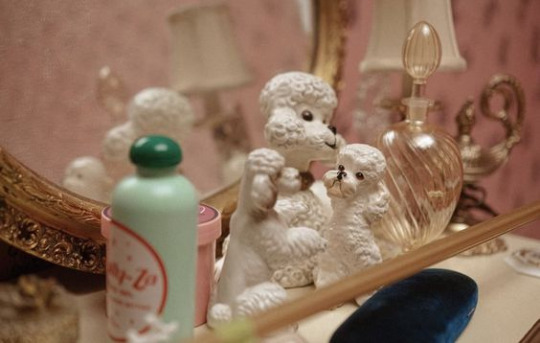
thank you for reading!!! follow me to see more posts like this about fashion, films, books and everything pretty!!
xoxo, itgirls777
#female hysteria#femcel#lana del rey#manic pixie dream girl#girlblogger#girlblogging#lana del rey aka lizzy grant#feminine#sofia coppola#coquette dollete#coquette#coquette girl#pink bows#ribbons and bows#lizzy grant#ballerina#ballet#black swan#balletcore#rotting#girlhood#sadgirl#im just a girl#im just tired#girl interrupted#this is what makes us girls#just girly things#yo soy la princesa#born to die#priscilla 2023
112 notes
·
View notes
Text
The basics of how we got a U.S. phone number and SIM card with a budget phone plan to prepare for immigration.
A lot of things of immigration, services, and moving preparations can require having an active U.S. phone number. This also applies to people that moved away from the U.S. but still need a point of contact with U.S. institutions without being flagged. This is not a universal method! It is just one way.
Things used in our method:
A phone service that ships SIM cards and allows for Wi-Fi calling / texting (alternatively, an e-sim)
Compatible phone (For physical SIM cards: phone carrier unlocked, with VoLTE capability. For e-sims: phones with e-sim capability)
Proxy Shipping service if you live somewhere with shipping customs issues or that the SIM card doesn't directly ship to ( - can also use someone willing to bring the SIM card to you if they come to your country)
A U.S. (residential) address you can write down, even if don't live there (example: can use the address of family, friends, future address, previous address, proxy carrier address if it has residential option, or people willing to help lend you / suggest an address. Some might consider just making one up.)
Debit card, Credit card, or PayPal to use to pay.
Explanation:
If your phone is compatible with e-sims, you actually have a lot more options than we did.
E-sims makes using a proxy shipping address, and maybe even having a residential address - unnecessary. You can basically skip the rest of this. Opens up options a lot more, as long as they're compatible with Wi-Fi calling (Example list of e-sims for "travelers") (Check if phone is compatible with e-sim)
Because our phone isn't compatible with e-sim, though...
We used Tello Mobile and it's $5usd + taxes a month custom plan (unlimited text, 100 minutes of calling). The sim card itself costs $3 from official seller on Amazon, but $3.99 to $6 from resellers. (optional: here's our Tello Mobile referral link, so you can get $10 of credit. You have to manually set it as a payment method whenever you want to use it, before autopay goes thru though.)
Alternatively, there's Ultramobile PayGo which have seen others vouch for wrt Wi-Fi calling outside the U.S., but have not used ourself. It is $3 a month, but the physical SIM kit is $13.
There are more "cheap U.S. sim cards" but we cannot claim familiarity nor experience with them, so any risks from using a lesser known phone service has to be considered.
If you're getting the physical sim of Tello Mobile, check that your phone is compatible first in the official site's compatibility check page.
What we did after, was to buy the Tello SIM card from an eBay reseller with decent reviews *instead* of buying a plan and SIM directly on Tello all at once.
The reason for this decision is that:
1. if buy from Amazon then the shipping cost is not transparent for items as low as $3usd (and also Amazon hates us).
2. Tello is more likely to deny the purchase and not ship the SIM card if the shipping location vs residential location is different or suspicious to them. (the residential location you put will affect the area code you get btw)
Consider if proxy shipping or asking someone to give the SIM card to you is the answer, if default shipping method isn't an option for your country. For proxy shipping options, please search the options available for your country and location, as it is varies a LOT. Be sure that the method of delivery works for you, and check how much it costs to receive things or if it requires a membership fee or what. (our proxy shipper costs money to receive things, based on weight and category of product, but no membership fee)
When you get the Tello physical SIM card, it comes with an activation code. You can use this code to conect a purchase of a Tello plan to be specifically for your SIM card.
Then you add the U.S. residential address that will affect the area code you get, and add the payment method. If it goes through, it's supposed to activate your phone number soon after.
To receive texts and phone calls outside of U.S. territories using that U.S. phone number, enabling Wi-Fi calling or VoIP whenever you need it may be necessary.
So, that's basically the main deal!
18 notes
·
View notes
Note
Do you have any tips or advice for running an artists booth at a convention? I'm thinking about doing it eventually and been wanting to hear from people who have done it before :^)
yeah!!! lemme rattle off a few things off the top a my head also, pardon me 4 using amazon dot ca links for products that i mention. its just easy to find references that way (and often u can look up the brand and find their non-amazon store etc etc)
this got super long so im putting it under a cut!!
• join an artist alley group!! i'm in this artist alley discord and it is a fantastic place to get info about cons, table display ideas, manufacturer recommendations, etc. there are more than just this group out there and i think there are bigger ones but i personally really like this one ^u^ i make a ton of use of the display resources and manu recommendation channels!
• if you can afford it, be choosy about the events you apply to. there are a lot of cons out there that are fantastic, and a lot that aren't worth the trouble, and i don't necessarily mean small vs big cons. some of my fav events are smaller artist alleys local to me, and most of the artists i know avoid informa (fanexpo) like the plague. check out what other artists have to say about past events and keep an eye out for red flags: personally i find cons with really out of date/poorly advertised social medias and websites that have mismatched info are a warning sign of a mismanaged and not well attended event. • you don't need a lot of fancy display stuff to start, those sorts of things you can build up over time. im a fan of getting a ton of my display stuff from the dollar store >:)
when you're ready and need the space to display a good amount of art the main thing you wanna pick up is definitely something that gives your table some verticality, whether that's a pvc pipe style setup, pegboards, or modular cube shelving (we all used to use these big heavy grid ones until the plastic sheet covered ones came out and now we all use those. theyre cuter and lighter and fit better on a table and come in more colours yayay. im sure some people still like the grid ones since they fit gridwall accessories tho) there are lots of other ways to display stuff but these r what i am most familiar with. definitely helps to look at youtube and pinterest and discord groups for display ideas!!
another thing you will want to start is a tablecloth. not every con has their tables already covered! there are those plastic picnic ones at dollar stores, and you can thrift bedsheets/fabric too.
• depending on the type of display and art you do you'll need some way to attach signs/prints/charms/etc to your display. i just moved from blu-tack to magnets but i used to use sewing clips (back when i used the grid cubes) and before then masking tape. all of them are okay and cool! except blu-tack. don't make the same mistakes as me it adds like 40 whole minutes to teardown and it leaves gross oil on the prints after some time. evil
• if you don't have business cards you can make a sign with a qr code that links to you/your shop! there are lots of qr code makers online that u can even customize with images and colours and stuff. there will be people that wanna know how to find you again after a con!
• these days a lot of people don't bring cash to conventions and it's pretty vital to bring some sort of card reader or other digital payment method. most of us use square - they recently made it so that the phone app can accept tap! so you don't need to jump for the expensive physical readers. i've also got a paypal dot me qr code and my etransfer email (i think this is a canadian thing) on a lil sign on the table so people have lots of payment options. usually over 50% of my con income comes from non-cash sales!
• make sure to bring change!! we've forgotten in the past and done okay but it's always handy to be able to make change for people. you'll want a secure place to put cash as well, whether it's a locked moneybox that you keep out of sight or a place on your person (friend of mine uses a fanny pack!) you never wanna leave your table completely unattended but especially when it comes to the moneybox. if it's a multi day con this is an item you mustn't leave at your table overnight.
• keep count of your sales and expenses properly so that you can see how much you made at the end of the con. i really like spreadsheets but you can even just note it down in a book. here's a little example of one con for me:
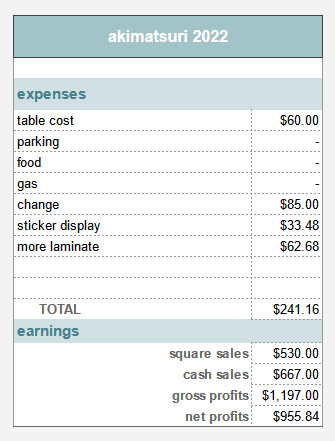
• you'll want to make a checklist of stock and display stuff to bring, but don't forget to make a list of minor stuff like phone chargers and scissors and tape and glue and pens and paper. multiple types of tape and paper if possible. they don't feel super important until you're stuck because you forgot to make a price sign and have to get by with a sharpie and a napkin. don't let that be you!! dollar store sticky note pads are super useful for this type of thing.
• plan out your prices and do as much prep (counting, sign making, display planning, packing/sorting) as you can beforehand so that the event doesn't feel too stressful. make sure your merchandise is stored in an easily accessible way for you behind the table so you aren't scrambling or rummaging too much when people are asking for stuff!
• similarly, whatever you can leave out for people to just pick/grab themselves, the more of it you're likely to sell. things like stickers and charms are good for this - people like to touch stuff! and it makes it so you don't need to go fishing for items for people as frequently. generally i don't do this with more expensive items just to be safe.
• if you sell prints, people are gonna ask for sleeves to keep them safe, especially at outdoor events. sometimes people ask for sleeves/bags even if they dont buy anything. they're a good idea to have on hand and you can find em for pretty cheap online and for a bit more expensive at dollar stores (i use OPP bags. if you dont wanna use plastic you can always get paper bags/envelopes/glassine bags instead)
• a cushion for the chair is a good idea. lots of conventions have really uncomfy chairs. some folks even bring camping chairs instead!
• pack snacks/lunch/water/drinks/have lunch plans. if you have a table buddy that is able to run out for food that's always nice. you might be sitting but it uses a lot of energy to interface all day!! you'll be exhausted and hungry and it's gonna be important to get enough fuel for your brain to function properly. i genuinely would recommend juice/soda/coffee/energy dink alongside water and food if you wanna live, especially if its a multi day con. get good sleep on days between!
• if you're excited to do trades with other artists during the con, the general etiquette is to wait until later in the day/near the end when the crowds are winding down! it's always okay to ask if someone's doing trades, and don't be upset or press them if they aren't interested or have certain stuff they don't want to trade.
• speaking of con etiquette, depending on the type of vert you are (intro/extro) and or how much customer service experience you have, interfacing can be nervewracking. my general rule is that if they stop to look, i say Hello and let them browse. if they seem interested in my table i try and do some small talk. stuff like How are you/How's the event been for ya/compliments on their outfit/cosplay/merch they have on like pins etc are good! kids and old folks love this. as tiring as it is to do some of my favourite parts of cons is talking to nice people that like my art!! all the folks that say nice things about my work are what keep me drawing ;w; i keep my sketchbook with me to jot down/doodle nice and funny encounters just cus it makes me happy to look back on XD
• when it's teardown time try to put stuff away as neatly as you can. you might be tired and just wanna toss all your stuff into whatever it is you brought it in but i promise future you (especially next-con you) will be so thankful that you put all your price signs into one baggie etc etc.
• speaking of bringing and putting away merch - you'll need a way to get it all from your home/car to your table and back. lots of people use dollies and other types of utility cart (i can guarantee there are a bunch of those grandma grocery ones at your local thrift store!!) - i personally use a big luggage bag and a collapsible wagon, but back in the day we used to CARRY bin after bin of stuff from the car and back in multiple trips which i would NOT reccomend lol. not every convention hall is easily accessible or close to parking so not having to lift stuff if you can avoid it is gonna be vital.
75 notes
·
View notes
Text
MIT libraries are thriving without Elsevier

I'm coming to BURNING MAN! On TUESDAY (Aug 27) at 1PM, I'm giving a talk called "DISENSHITTIFY OR DIE!" at PALENQUE NORTE (7&E). On WEDNESDAY (Aug 28) at NOON, I'm doing a "Talking Caterpillar" Q&A at LIMINAL LABS (830&C).

Once you learn about the "collective action problem," you start seeing it everywhere. Democrats – including elected officials – all wanted Biden to step down, but none of them wanted to be the first one to take a firm stand, so for months, his campaign limped on: a collective action problem.
Patent trolls use bullshit patents to shake down small businesses, demanding "license fees" that are high, but much lower than the cost of challenging the patent and getting it revoked. Collectively, it would be much cheaper for all the victims to band together and hire a fancy law firm to invalidate the patent, but individually, it makes sense for them all to pay. A collective action problem:
https://locusmag.com/2013/11/cory-doctorow-collective-action/
Musicians get royally screwed by Spotify. Collectively, it would make sense for all of them to boycott the platform, which would bring it to its knees and either make it pay more or put it out of business. Individually, any musician who pulls out of Spotify disappears from the horizon of most music fans, so they all hang in – a collective action problem:
https://pluralistic.net/2024/06/21/off-the-menu/#universally-loathed
Same goes for the businesses that get fucked out of 30% of their app revenues by Apple and Google's mobile business. Without all those apps, Apple and Google wouldn't have a business, but any single app that pulls out commits commercial suicide, so they all hang in there, paying a 30% vig:
https://pluralistic.net/2024/08/15/private-law/#thirty-percent-vig
That's also the case with Amazon sellers, who get rooked for 45-51 cents out of every dollar in platform junk fees, and whose prize for succeeding despite this is to have their product cloned by Amazon, which underprices them because it doesn't have to pay a 51% rake on every sale. Without third-party sellers there'd be no Amazon, but it's impossible to get millions of sellers to all pull out at once, so the Bezos crime family scoops up half of the ecommerce economy in bullshit fees:
https://pluralistic.net/2023/11/06/attention-rents/#consumer-welfare-queens
This is why one definition of "corruption" is a system with "concentrated gains and diffuse losses." The company that dumps toxic waste in your water supply reaps all the profits of externalizing its waste disposal costs. The people it poisons each bear a fraction of the cost of being poisoned. The environmental criminal has a fat warchest of ill-gotten gains to use to bribe officials and pay fancy lawyers to defend it in court. Its victims are each struggling with the health effects of the crimes, and even without that, they can't possibly match the polluter's resources. Eventually, the polluter spends enough money to convince the Supreme Court to overturn "Chevron deference" and makes it effectively impossible to win the right to clean water and air (or a planet that's not on fire):
https://www.cfr.org/expert-brief/us-supreme-courts-chevron-deference-ruling-will-disrupt-climate-policy
Any time you encounter a shitty, outrageous racket that's stable over long timescales, chances are you're looking at a collective action problem. Certainly, that's the underlying pathology that preserves the scholarly publishing scam, which is one of the most grotesque, wasteful, disgusting frauds in our modern world (and that's saying something, because the field is crowded with many contenders).
Here's how the scholarly publishing scam works: academics do original scholarly research, funded by a mix of private grants, public funding, funding from their universities and other institutions, and private funds. These academics write up their funding and send it to a scholarly journal, usually one that's owned by a small number of firms that formed a scholarly publishing cartel by buying all the smaller publishers in a string of anticompetitive acquisitions. Then, other scholars review the submission, for free. More unpaid scholars do the work of editing the paper. The paper's author is sent a non-negotiable contract that requires them to permanently assign their copyright to the journal, again, for free. Finally, the paper is published, and the institution that paid the researcher to do the original research has to pay again – sometimes tens of thousands of dollars per year! – for the journal in which it appears.
The academic publishing cartel insists that the millions it extracts from academic institutions and the billions it reaps in profit are all in service to serving as neutral, rigorous gatekeepers who ensure that only the best scholarship makes it into print. This is flatly untrue. The "editorial process" the academic publishers take credit for is virtually nonexistent: almost everything they publish is virtually unchanged from the final submission format. They're not even typesetting the paper:
https://link.springer.com/article/10.1007/s00799-018-0234-1
The vetting process for peer-review is a joke. Literally: an Australian academic managed to get his dog appointed to the editorial boards of seven journals:
https://www.atlasobscura.com/articles/olivia-doll-predatory-journals
Far from guarding scientific publishing from scams and nonsense, the major journal publishers have stood up entire divisions devoted to pay-to-publish junk science. Elsevier – the largest scholarly publisher – operated a business unit that offered to publish fake journals full of unreveiwed "advertorial" papers written by pharma companies, packaged to look like a real journal:
https://web.archive.org/web/20090504075453/http://blog.bioethics.net/2009/05/merck-makes-phony-peerreview-journal/
Naturally, academics and their institutions hate this system. Not only is it purely parasitic on their labor, it also serves as a massive brake on scholarly progress, by excluding independent researchers, academics at small institutions, and scholars living in the global south from accessing the work of their peers. The publishers enforce this exclusion without mercy or proportion. Take Diego Gomez, a Colombian Masters candidate who faced eight years in prison for accessing a single paywalled academic paper:
https://www.eff.org/deeplinks/2014/07/colombian-student-faces-prison-charges-sharing-academic-article-online
And of course, there's Aaron Swartz, the young activist and Harvard-affiliated computer scientist who was hounded to death after he accessed – but did not publish – papers from MIT's JSTOR library. Aaron had permission to access these papers, but JSTOR, MIT, and the prosecutors Stephen Heymann and Carmen Ortiz argued that because he used a small computer program to access the papers (rather than clicking on each link by hand) he had committed 13 felonies. They threatened him with more than 30 years in prison, and drew out the proceedings until Aaron was out of funds. Aaron hanged himself in 2013:
https://en.wikipedia.org/wiki/Aaron_Swartz
Academics know all this terrible stuff is going on, but they are trapped in a collective action problem. For an academic to advance in their field, they have to publish, and they have to get their work cited. Academics all try to publish in the big prestige journals – which also come with the highest price-tag for their institutions – because those are the journals other academics read, which means that getting published is top journal increases the likelihood that another academic will find and cite your work.
If academics could all agree to prioritize other journals for reading, then they could also prioritize other journals for submissions. If they could all prioritize other journals for submissions, they could all prioritize other journals for reading. Instead, they all hold one another hostage, through a wicked collective action problem that holds back science, starves their institutions of funding, and puts their colleagues at risk of imprisonment.
Despite this structural barrier, academics have fought tirelessly to escape the event horizon of scholarly publishing's monopoly black hole. They avidly supported "open access" publishers (most notably PLoS), and while these publishers carved out pockets for free-to-access, high quality work, the scholarly publishing cartel struck back with package deals that bundled their predatory "open access" journals in with their traditional journals. Academics had to pay twice for these journals: first, their institutions paid for the package that included them, then the scholars had to pay open access submission fees meant to cover the costs of editing, formatting, etc – all that stuff that basically doesn't exist.
Academics started putting "preprints" of their work on the web, and for a while, it looked like the big preprint archive sites could mount a credible challenge to the scholarly publishing cartel. So the cartel members bought the preprint sites, as when Elsevier bought out SSRN:
https://www.techdirt.com/2016/05/17/disappointing-elsevier-buys-open-access-academic-pre-publisher-ssrn/
Academics were elated in 2011, when Alexandra Elbakyan founded Sci-Hub, a shadow library that aims to make the entire corpus of scholarly work available without barrier, fear or favor:
https://sci-hub.ru/alexandra
Sci-Hub neutralized much of the collective action trap: once an article was available on Sci-Hub, it became much easier for other scholars to locate and cite, which reduced the case for paying for, or publishing in, the cartel's journals:
https://arxiv.org/pdf/2006.14979
The scholarly publishing cartel fought back viciously, suing Elbakyan and Sci-Hub for tens of millions of dollars. Elsevier targeted prepress sites like academia.edu with copyright threats, ordering them to remove scholarly papers that linked to Sci-Hub:
https://svpow.com/2013/12/06/elsevier-is-taking-down-papers-from-academia-edu/
This was extremely (if darkly) funny, because Elsevier's own publications are full of citations to Sci-Hub:
https://eve.gd/2019/08/03/elsevier-threatens-others-for-linking-to-sci-hub-but-does-it-itself/
Meanwhile, scholars kept the pressure up. Tens of thousands of scholars pledged to stop submitting their work to Elsevier:
http://thecostofknowledge.com/
Academics at the very tops of their fields publicly resigned from the editorial board of leading Elsevier journals, and published editorials calling the Elsevier model unethical:
https://www.theguardian.com/science/blog/2012/may/16/system-profit-access-research
And the New Scientist called the racket "indefensible," decrying the it as an industry that made restricting access to knowledge "more profitable than oil":
https://www.newscientist.com/article/mg24032052-900-time-to-break-academic-publishings-stranglehold-on-research/
But the real progress came when academics convinced their institutions, rather than one another, to do something about these predator publishers. First came funders, private and public, who announced that they would only fund open access work:
https://www.nature.com/articles/d41586-018-06178-7
Winning over major funders cleared the way for open access advocates worked both the supply-side and the buy-side. In 2019, the entire University of California system announced it would be cutting all of its Elsevier subscriptions:
https://www.science.org/content/article/university-california-boycotts-publishing-giant-elsevier-over-journal-costs-and-open
Emboldened by the UC system's principled action, MIT followed suit in 2020, announcing that it would no longer send $2m every year to Elsevier:
https://pluralistic.net/2020/06/12/digital-feudalism/#nerdfight
It's been four years since MIT's decision to boycott Elsevier, and things are going great. The open access consortium SPARC just published a stocktaking of MIT libraries without Elsevier:
https://sparcopen.org/our-work/big-deal-knowledge-base/unbundling-profiles/mit-libraries/
How are MIT's academics getting by without Elsevier in the stacks? Just fine. If someone at MIT needs access to an Elsevier paper, they can usually access it by asking the researchers to email it to them, or by downloading it from the researcher's site or a prepress archive. When that fails, there's interlibrary loan, whereby other libraries will send articles to MIT's libraries within a day or two. For more pressing needs, the library buys access to individual papers through an on-demand service.
This is how things were predicted to go. The libraries used their own circulation data and the webservice Unsub to figure out what they were likely to lose by dropping Elsevier – it wasn't much!
https://unsub.org/
The MIT story shows how to break a collective action problem – through collective action! Individual scholarly boycotts did little to hurt Elsevier. Large-scale organized boycotts raised awareness, but Elsevier trundled on. Sci-Hub scared the shit out of Elsevier and raised awareness even further, but Elsevier had untold millions to spend on a campaign of legal terror against Sci-Hub and Elbakyan. But all of that, combined with high-profile defections, made it impossible for the big institutions to ignore the issue, and the funders joined the fight. Once the funders were on-side, the academic institutions could be dragged into the fight, too.
Now, Elsevier – and the cartel – is in serious danger. Automated tools – like the Authors Alliance termination of transfer tool – lets academics get the copyright to their papers back from the big journals so they can make them open access:
https://pluralistic.net/2021/09/26/take-it-back/
Unimaginably vast indices of all scholarly publishing serve as important adjuncts to direct access shadow libraries like Sci-Hub:
https://pluralistic.net/2021/10/28/clintons-ghost/#cornucopia-concordance
Collective action problems are never easy to solve, but they're impossible to address through atomized, individual action. It's only when we act as a collective that we can defeat the corruption – the concentrated gains and diffuse losses – that allow greedy, unscrupulous corporations to steal from us, wreck our lives and even imprison us.

Community voting for SXSW is live! If you wanna hear RIDA QADRI and me talk about how GIG WORKERS can DISENSHITTIFY their jobs with INTEROPERABILITY, VOTE FOR THIS ONE!

If you'd like an essay-formatted version of this post to read or share, here's a link to it on pluralistic.net, my surveillance-free, ad-free, tracker-free blog:
https://pluralistic.net/2024/08/16/the-public-sphere/#not-the-elsevier
#pluralistic#libraries#glam#elsevier#monopolies#antitrust#scams#open access#scholarship#education#lis#oa#publishing#scholarly publishing#sci-hub#preprints#interlibrary loan#aaron swartz#aaronsw#collective action problems
626 notes
·
View notes
Text
Astrology and Chill: Finding Your Perfect Hobby

Hobbies... let's see if astrology could help us develop any. You're gonna want to look at your sun sign, moon sign, ascendant, Venus, and 5th placements. Why?
Sun - Hobbies picked based on your sign's vibe help you express your essence and who you truly are as a person, strengthening your sense of self and identity. It helps you become secure in yourself in various ways as well.
Moon - Hobbies picked based on your moon would allow you to express your emotions, which is powerful in itself. This could cater to your emotional well-being or help aid in your emotional healing journey.
Ascendant: Rising is all about how you present yourself to the world. So, picking a hobby based on your rising sign could help you align with the part of you that loves to interact with people (however little or many in your life). It would help you be more social, maybe just a tiny bit more outgoing, but every bit counts.
Venus - Well, this just goes without saying. Picking hobbies based on your Venus sign has the potential to bring you pleasure, joy, and that yummy satisfaction. It could even add to your overall beauty.
Lastly, the 5th house - Ruling over the area of hobbies, looking at the sign can give you an idea of a hobby that best aligns with your natural creative self-expression and has the ability to express your inner child. It could bring a sense of lightheartedness into your life.
So here are some hobby suggestions to get your brain juices flowing:
Aries Energy: Try High-Intensity Interval Training (HIIT) workouts or any kind of workout, really. Quick, intense bursts of exercise will satisfy your need for action and keep you in top shape. It doesn't even have to be a traditional workout; you could try biking, join a martial arts class (kind of cliché but whatever works for you), or do power yoga. On the flip side, if you happen to own a pogo stick, babe, there's your new hobby -> pogo-stick-jumping competitions. 😜

Taurus Energy: Slow down and embrace the art of patience, Taurus. Cultivate your miniature oasis with bonsai gardening. Shaping these tiny trees allows you to connect with nature and indulge your love for aesthetics. If bonsai trees aren't your thing, understandably so, you could start a herb garden and nurture that instead. It's a practical and rewarding way to bring fresh flavors to your kitchen.

Gemini Energy: Stimulate your quick-witted mind with some speed scrabble, or, on a more fun note, you could try podcasting. You don't actually have to release any; just record yourself pretending to be a podcaster and talk about anything and everything. Keep the recordings as video diaries or do whatever you want with them. It's a great outlet, to be honest. Not gonna lie (not my Gemini Venus-ass loving this idea, lol 😛).

Cancer Energy: Dive into the world of sentimental creativity, Cancer. Preserve cherished memories by creating a memory quilt. Each square tells a story; you could embroider the squares, get the fabric printed. You could even start small and create a miniature quilt first before taking on a monstrous project like that. Alternatively, grab your camera and capture pictures of the moon, in all her phases and colors, and decorate your space with your pictures of the moon. Ugh, love!

Leo Energy: Be the star of your own show, Leo! Create a mini home theater production, complete with homemade costumes and dramatic flair. You could even try some DIY home decor to customize your space for optimum self-expression.

Virgo Energy: Unleash your eye for detail, Virgo. Dive into the world of precision origami. Folding paper into intricate designs not only hones your focus but also results in beautiful, miniature works of art. Speaking of miniature, you could even try your hand at building one of those incredibly detailed miniature houses. Get a kit off of Amazon and build away, Virgo.

Libra Energy: Bring your love for balance to social gatherings, Libra. Host interactive murder mystery parties where your friends become characters in a thrilling plot. The perfect blend of drama and social harmony. You could even host a small book club, be it online or offline, with however many people you like.
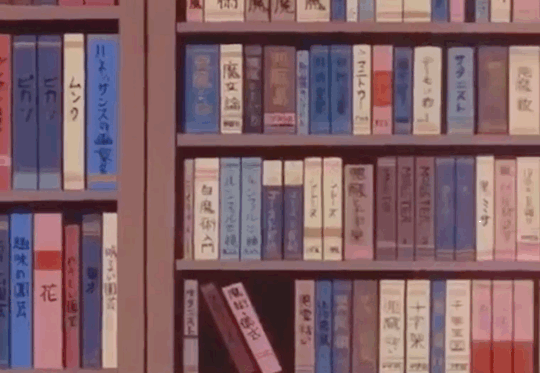
Scorpio Energy: Embrace the mystique, Scorpio. Dive into the art of candle carving. Craft intricate designs on wax, creating candles that exude mystery and allure. Alternatively, you could play video games that allow you to be a detective and uncover the truth behind mysteries. 😮

Sagittarius Energy: Satisfy your wanderlust, Sagittarius. Explore your local area like a tourist. Discover hidden gems, try new cafes, and appreciate the adventure within reach. Maybe even take pictures of your little gallivantings and have them as precious keepsakes. ❤️

Capricorn Energy: Connect with your earthy side, Capricorn. Delve into the art of terrarium building, creating tiny ecosystems within glass containers that blend nature and minimalistic design. Alternatively, if you don't want to go the unusual route and wish to nurture your love for tradition, you could learn ancient calligraphy—a disciplined yet artistic hobby to indulge in when you're not out there kicking ass and making money moves. :)

Aquarius Energy: Embrace your love for innovation, Aquarius. Try your hand at DIY electronics projects. From building simple gadgets to exploring coding, it's a tech-savvy way to express your creativity. Alternatively, you can scour thrift stores, garage sales, or even your own home for materials to transform into imaginative sculptures, wall art, or even functional pieces. This hobby not only unleashes your creativity but also aligns with your humanitarian and eco-friendly tendencies, promoting a sustainable approach to art.
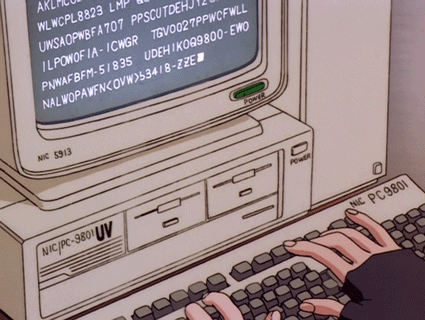
Pisces Energy: Tap into your dreamy side, Pisces. Create your own dreamcatchers. It's a crafty and symbolic way to channel your imaginative energy. Alternatively, you could combine dream journaling with art. Illustrate your dreams in a visual diary; it would allow your subconscious to express itself through your art
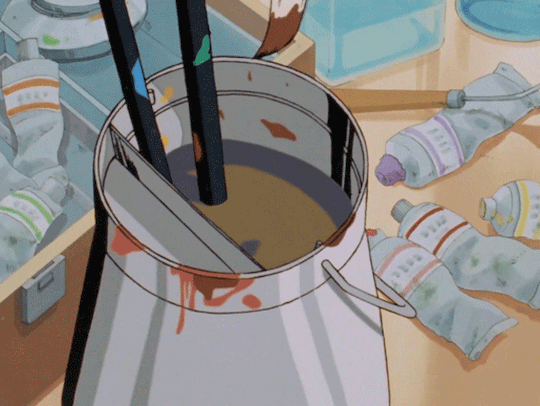
So that was my take on how you can get started on building a meaningful hobby, based on your natural energies :]
Love and Loads of Light <3
~~~~~~~~~~~~~~~~~~~~~~~~~~~~~~~~~~~~~~~~~~~~~~~~~~~~
ALSO THANK YOU for a hundred likes I'm grateful to anybody that has stumbled upon my stuff and liked it. You have good taste :p
I appreciate you alot!
~~~~~~~~~~~~~~~~~~~~~~~~~~~~~~~~~~~~~~~~~~~~~~~~~~~~
#spirituality#astrology#zodiac#astrology community#astrologyreadings#aries#taurus#gemini#cancer#leo#virgo#libra#scorpio#saggitarius#capricorn#aquarius#pisces#astrology insights#astrology blog#astro community#astro observations#natal astrology#astro notes
51 notes
·
View notes
Text
How to spot a Recast store.
First of all, what is a recast?
A recast is an unlicensed copy of a BJD, a knockoff, a fake. Usually the dolls are bought from a legit company (sometimes not even from the recast company itself, but from supporters), a mold is made (either making a physical mold or a 3D scan) and then the dolls can be mass produced. Usually made in China, but there are exceptions to this.
I'm not going into detail here on why they are a big problem, there are tons of posts about this on the internet. They are bad, they destroy the dollmakers and artists that I love, if you're fine with that, this blog isn't for you.
This blog is for those, that want to buy legit BJDs and don't want to accidentally buy a recast, which is getting harder and harder.
I'll put this under a cut, because this is gonna get a bit lengthy.
What not to do: Google "buy BJD", you'll literally get a ton of Ali Express listings of knockoff BJDs.
You will have to do some research up front, you need to know what company you want to buy. For that, you can go to the BJD hashtag, here, on instagram, sometimes even Twitter, and see if there is something you like. Usually people also tag the company and sculpt, and if not, asking usually gets the reply.
You can also go to one of the many official dealer pages and just click through their dolls to see if you find something that you like.
Stay away from Ali Express and Amazon. Both of these pages are riddled with knockoffs. Idk if there are actually any legit sellers on Ali, if there are, they are few. I think Dollzone sells on Amazon, but seriously, most of the dolls there are fakes.
Ebay and Etsy are also full of recasts, but you can find some legit dolls there.
So, how do you spot a recast store? Let me show you some hints, that are usually a dead giveaway.
A lot of different styles.

This is the header of an etsy shop. While the two on the left might be from the same maker, the other two are very different. (The one on the right is a doll from Fairyland, one of the, if not the most recasted company out there).
Different styles only make sense, if the seller is a distributor/dealer. If it's not a dealer, back out.
Which brings us to the next point:
Generic names.
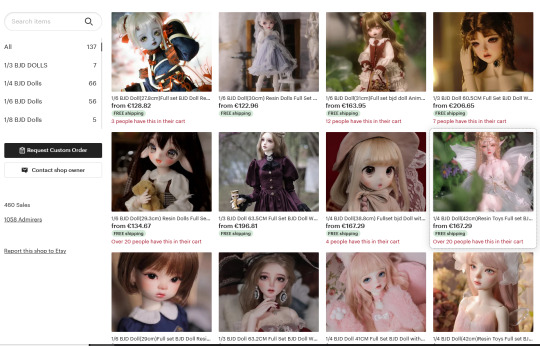
If a shop were a dealer, they would give you the names of the companies and sculpts.
Example from an official dealer:

See how you can choose the company, size, and then the sculpts? Recast shops don't give you that (there's one exception, that I'll mention later).
They give you "1/4 BJD Doll MSD", "Girl BJD 1/6" or if they wanna go all out "1/3 BJD Doll 60.5CM Full Set BJD Doll With Clothes Resin Toys Best Gift for Girls Hand Made Doll Custom Dolls OOAK Art Doll diy Dolls".
They want to stay as generic as possible, so the newbies that google for "buy bjd" will be redirected to their pages.
If you find generic names, back the hell out of there. I don't know a single company or dealer, that do not tell you what doll exactly you're buying!
Short production time
BJDs take time to make. They are not mass produced dolls, they are casted, sanded, strung and packed by small companies. Even the big names in this hobby usually are just a hand full of people. So it takes time.
Usually between 2-6 months. I don't know any company that actually gives you an estimate below 60 days. Sometimes they ship faster (maybe it's a popular sculpt and they have actually made some for stock, maybe they didn't have a lot of orders during that time, etc), but they don't usually give you a shorter timeline.
If your listing claims the doll will be shipped in 1-2 weeks? Bad news for you, that's usually a recast store.
Price
I hate to say it, but this is an expensive hobby. Dolls usually cost at least $200, oftentimes more. There are some companies that have cheaper prices, but if it goes below $150, I would definitely have a closer look.
Now, the price is usually the last thing that I mention, because before the price tag, you should check for all the things mentioned above. Only if you have a consistent style, specific names, and a timeline that makes sense, then you should check for the price.
I say that, because I know of one Recast store, that tries so hard to look legit, they actually put effort in it.
And that is the BJD Shop.
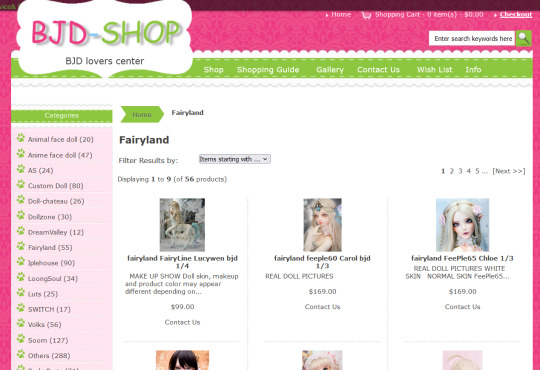
Look at that. You have company names, you have sculpt names, it looks like a legit dealer (if you ignore that their production time is 1-4 weeks).
But now look at the prices.

Not taking into account that this specific sculpt isn't even available from Fairyland anymore, the price? Is not even $100 (for blank doll).
Now let's look at the actual price by FL:

Rule of thumb: If a price is too good to be true, it very likely is.
So I recommend actually looking for the doll company, if you find a dealer you're not sure is legit, and compare the prices.
A good page for information is Den Of Angels. It's a forum, but a lot of things are easily available without account through Google. For example their dealer list. Is it complete? I don't know, maybe not, but it's a good start.
I hope this is helpful for anyone who isn't sure about a shop they want to buy from.
305 notes
·
View notes